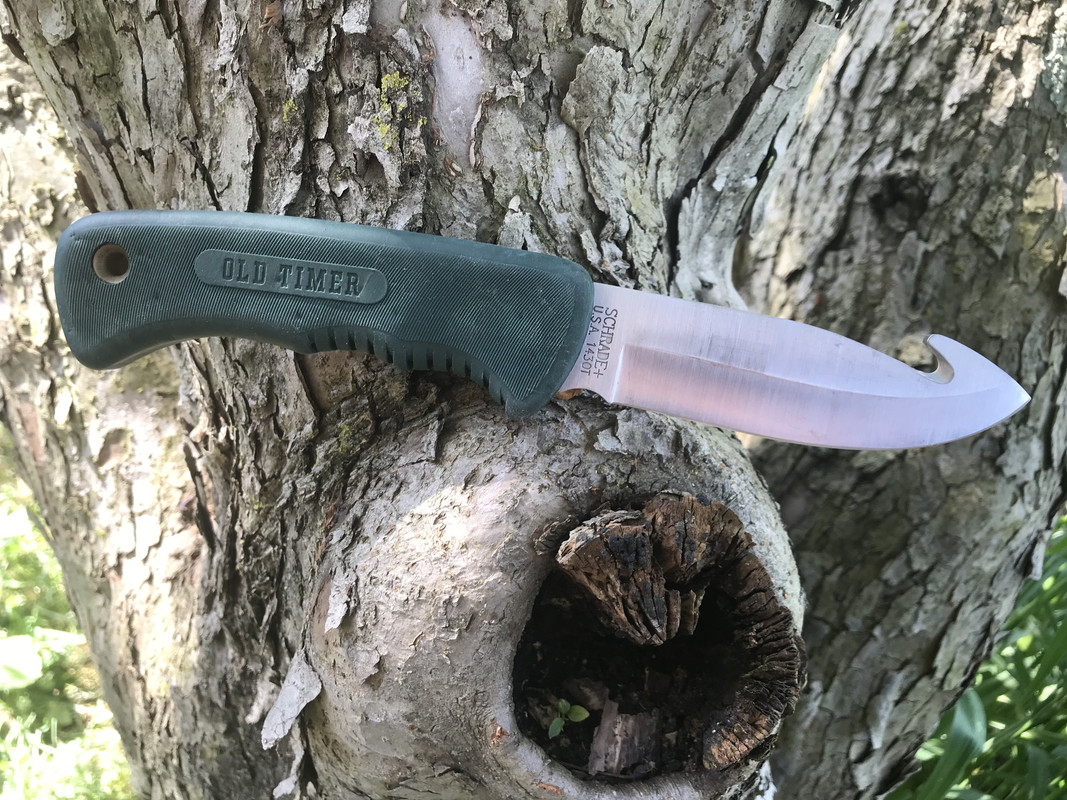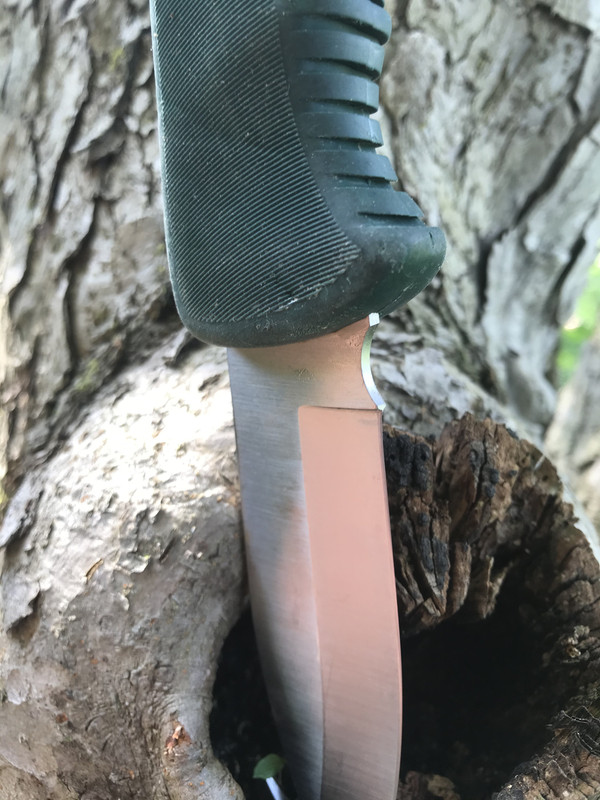Hello all, was doing some Google searches on knives, and sharpening and this site came up. I witnessed an interesting Dremel experience the other day, and thought I would share and ask for your opinions.
So a friend of mine used my Dremel with a aluminum oxide stone to sharpen his Ontario Marine Raider. (To his credit he has a very steady hand and is pretty good with tools all around.) He made about four to five quick passes up both sides of the edge.
For me personally, I always thought that it would be hard to get the edge even with a Dremel, and I have heard people talk about the dangers of over heating the blade. In this case I saw a few sparks, but no discoloration on the edge (rest of the knife has that black finish), and the knife did not feel warm at all, then again I doubt an aluminum oxide bit creates as much heat as the other bits. Plus, the Marine Raider is a big knife so I wonder if a few passes really created much heat on the edge.
Overall he did a good job, not razor, but a solid chopping edge. I wonder if this would work ok on other larger knives, or if this is just a fluke from a steady hand? According to the Dremel manual the aluminum oxide bit can be used for knives. Thoughts? Opinions? Experiences? I am tempted to practice on a beater machete.
So a friend of mine used my Dremel with a aluminum oxide stone to sharpen his Ontario Marine Raider. (To his credit he has a very steady hand and is pretty good with tools all around.) He made about four to five quick passes up both sides of the edge.
For me personally, I always thought that it would be hard to get the edge even with a Dremel, and I have heard people talk about the dangers of over heating the blade. In this case I saw a few sparks, but no discoloration on the edge (rest of the knife has that black finish), and the knife did not feel warm at all, then again I doubt an aluminum oxide bit creates as much heat as the other bits. Plus, the Marine Raider is a big knife so I wonder if a few passes really created much heat on the edge.
Overall he did a good job, not razor, but a solid chopping edge. I wonder if this would work ok on other larger knives, or if this is just a fluke from a steady hand? According to the Dremel manual the aluminum oxide bit can be used for knives. Thoughts? Opinions? Experiences? I am tempted to practice on a beater machete.


